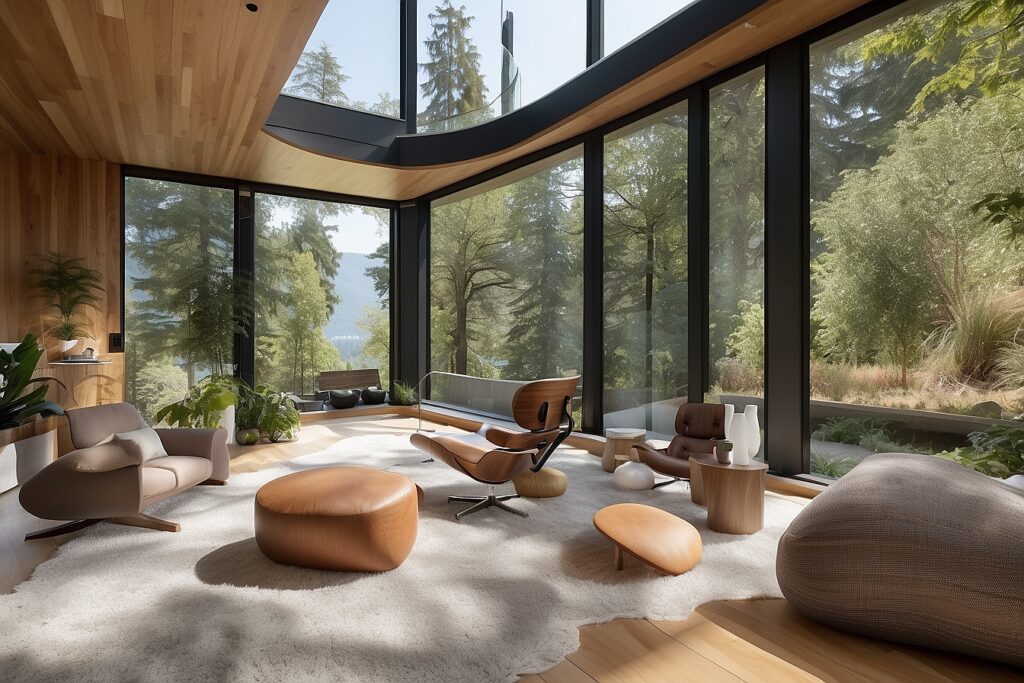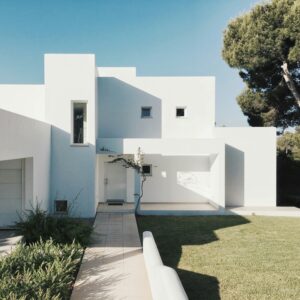Tim Pfeffer Discusses the Transformative Influence of Biophilic Design in His Work

Growing up in Tacoma, Washington, surrounded by nature, Tim Pfeiffer developed a deep appreciation for biophilia, an architectural concept that integrates natural elements into interior spaces.
Now a partner at Hoedemaker Pfeiffer, a Seattle-based architecture firm, Pfeiffer sees biophilic design as both contemporary and timeless.
“Biophilic design is meditative and transportive,” Pfeiffer explained. “It brings the outdoors inside and offers a look that seamlessly fits into any home.”
With a background that includes launching the Shinola brand at Rockwell Group, Pfeiffer has honed his skills in creating spaces that blend current trends with enduring style. In his projects, including luxury residences across Seattle, he prioritizes the integration of biophilic elements.
In an interview with Mansion Global, Pfeiffer shared insights on incorporating biophilic design into residential spaces, navigating challenges in home construction, and more.
Mansion Global: How does your firm prioritize integrating outdoor experiences into your designs?
Tim Pfeiffer: We’re privileged to work on properties set amidst breathtaking natural landscapes. For waterfront or scenic locations, our design process revolves around seamlessly blending the indoor and outdoor realms.
This involves incorporating seasonal structures, bunk houses, pools, outdoor kitchens, dining areas, and cozy lounge spaces complete with fire features. These elements ensure that residents can fully immerse themselves in the surrounding environment.
Do you have certain biophilic design elements that you incorporate into every project?
In every project, we emphasize natural materials that engage the senses. From the tactile allure of cedar paneling to the rustic charm of reclaimed timber and the earthy appeal of wet stone terraces, we strive to evoke a sense of connection to the outdoors.
Each window or passageway is strategically positioned to frame captivating views of the landscape or seascape beyond. Additionally, we bring elements of the exterior environment indoors through the use of wood or stacked stone cladding.
What tips can you offer for integrating biophilic design into unexpected spaces like the bathroom or kitchen?
Incorporating biophilic elements into unexpected spaces like the bathroom or kitchen can elevate the overall ambiance of your home. For instance, strategic plantings with lush foliage can provide privacy around windows in bathing areas, creating a serene connection with the outdoors.
In the kitchen, consider adding a raised bed herb garden adjacent to a window, adding both visual appeal and aromatic freshness to this utilitarian space. Additionally, creating a private green walled patio or terrace adjoining a bedroom can seamlessly merge indoor comfort with the tranquility of nature.
What are some common challenges you encounter during the design and construction process?
Navigating site restrictions is often a significant challenge, particularly when clients have grand visions for their properties. Factors such as waterfront setbacks, steep slopes, wetlands, and archaeological considerations can pose constraints on development plans. Additionally, regional building codes may impose limitations on certain aspects of the project.
Furthermore, building on isolated sites presents logistical hurdles, especially when access via roads or ferries is limited. Overcoming these challenges may require innovative solutions, such as utilizing water taxis or barges for material deliveries and employing specialized construction methods to accommodate unique site conditions.
How do you anticipate the evolution of biophilia in the coming years?
With ongoing environmental challenges and a growing appreciation for the importance of natural surroundings, we anticipate a surge in demand for biophilic design elements among both residential and commercial projects.
As people seek to reconnect with nature and prioritize wellness, incorporating biophilic principles into architectural and interior design will likely become increasingly prevalent.



